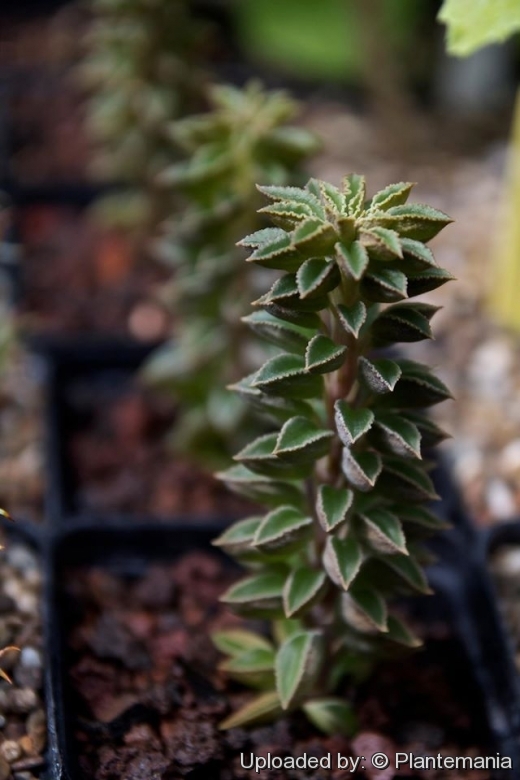
Peperomia wolfgang-krahnii Photo by: © Plantemania
Origin and Habitat: Peperomia wolfgang-krahniiSN|33369]]SN|33369]] is endemic to a small area below Aricapampa towards Marañon, La Libertad, Peru.
Altitude range: 1500-1600 metres above sea level.
Habitat and ecology. It grows in a subtropical climate together large Melocactus bellavistensisSN|20610]]SN|20610]] and Armatocereus rauhiiSN|4827]]SN|4827]] subsp. balsasensis.
Synonyms:
Description: Peperomia wolfgang-krahniiSN|33369]]SN|33369]] is a stunning miniature succulent species from Peru. It has beautiful window-topped grey-green warty leaves and it will branch to form a small, short mini-shrub 10-12 cm high.
Leaves. Alternate, petiole indistinct, lamina warty below, grey-green, longitudinally folded with a shiny grooved, smooth, dark green window.
Inflorescences: Narrow slender terminal panicles with insignificant flowers.
Bibliography: Major references and further lectures
1) The Cactus Explorer Number 13 December 2014
Cultivation and Propagation: The succulent peperomias, are epiphytes and require the same treatment as rhipsalis — not that of the cactus at the right. Though peperomia produce greenish-white, panicle-like flower spikes, they are grown primarily for their foliage. They are not hard to grow but avoid over-watering.
Soil: Requires very porous soil with excellent drainage. This plant is a forest dweller and does best with a culture that gives excellent airflow and a soil that allows the water to run quickly away from the roots and not promote sodden conditions (best soils mix used for epiphytes). These plants like to be a little pot bound. Outdoors, grow in well-drained soil in partial shade.
Watering: You must go rather easy on the watering, however, as it is rather sensitive to over- watering. Water moderately during summer but allow to dry moderately between waterings and sparingly during winter with water that is room temperature. Though you hear that these plants favour daily misting, it is not necessary, especially if room is not overly dry. Despite being very succulent it prefers not to dry out and to remain growing throughout the year.
Fertilization. Fertilize during the growing season with a balanced fertilizer.
Exposure: Thrives in filtered light with ample airflow. Avoid drafts.. Indoors, they require bright indirect light, but do tolerate low light.
Hardiness: Not particular about temperature, but best in a moderate to warm place. Protect from frost.
Uses: They are particularly attractive at the front of the bench, or on a shelf. They are also good for windowsill culture or as an accent in dish gardens.
Propagation: They are easy to propagate by cuttings.










